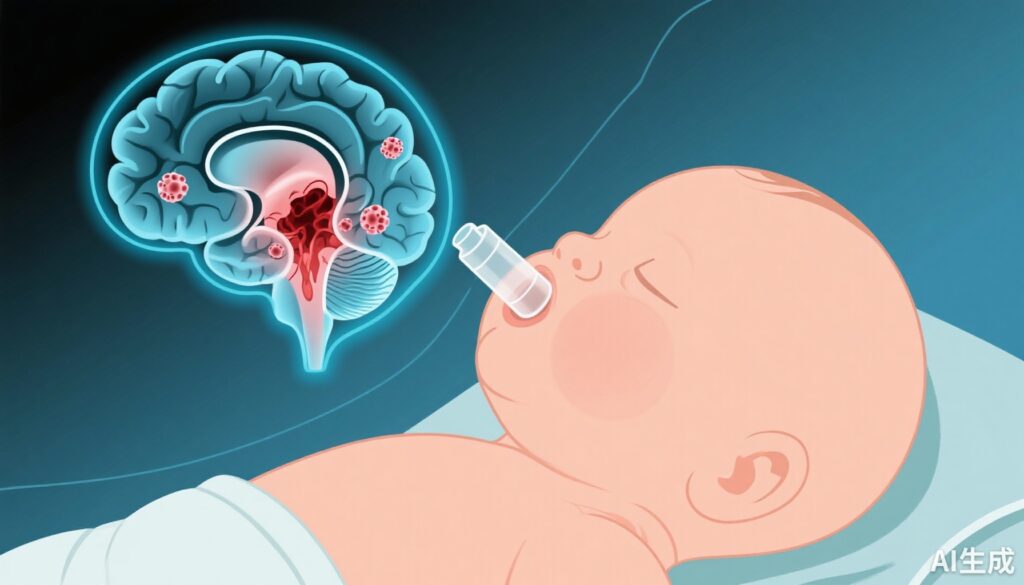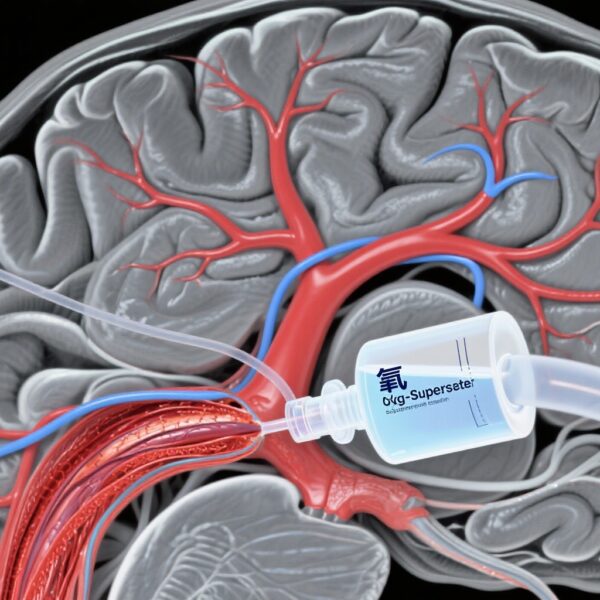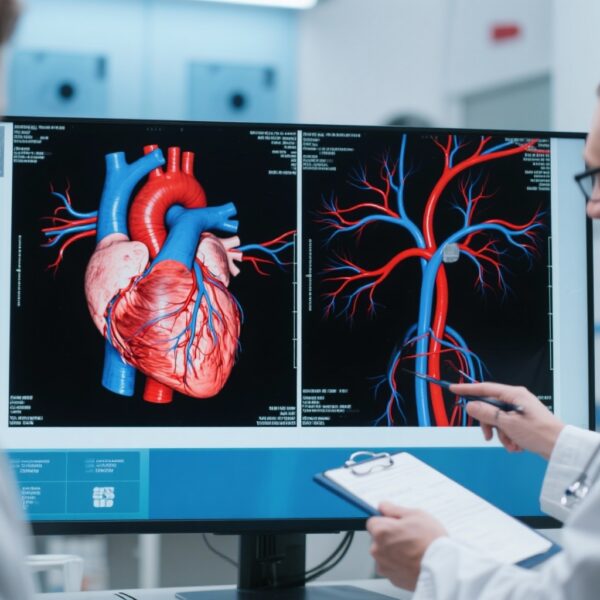Highlight
– Intranasal administration of allogeneic mesenchymal stromal cells (MSCs) in neonates with perinatal arterial ischemic stroke is feasible and shows no related adverse events up to two years of age.
– MRI analysis revealed a high tissue preservation ratio at 3 months post-treatment, exceeding expectations based on initial stroke volume.
– Children treated with MSCs exhibited fewer MRI signatures of corticospinal tract damage and better motor function at age two compared to a non-treated historical cohort.
– Cognitive, behavioral, and language impairments affected 10%–20% of treated children; no cases of epilepsy were observed within two years.
Study Background and Disease Burden
Perinatal arterial ischemic stroke (PAIS) occurs in approximately 1 in 2300 to 4000 live births, representing a significant cause of lifelong neurological disability including cerebral palsy, cognitive impairments, and epilepsy. While neonatal stroke is a well-recognized cause of unilateral cerebral palsy and hemiparesis, treatment options remain limited to supportive care and rehabilitation. Neuroprotective and regenerative interventions are under-explored despite the high socioeconomic and family burden. Mesenchymal stromal cells (MSCs) have shown promise in preclinical models by modulating neuroinflammation, promoting repair, and possibly enhancing neurogenesis. The PASSIoN study investigated the feasibility and short-term safety of intranasal administration of allogeneic MSCs in neonates with PAIS and now provides important data on long-term safety and neurodevelopmental outcomes compared to an untreated historical cohort.
Study Design
This post hoc analysis is based on data from the PASSIoN trial conducted between February 2020 and April 2021, involving 10 neonates diagnosed with PAIS who received a single dose of allogeneic MSCs intranasally. The primary aim was to assess safety and neurodevelopment over a 2-year period. Brain tissue loss was quantified using semi-automatic segmentation on neonatal and 3-month follow-up magnetic resonance imaging (MRI). At 2 years of age, assessments included the presence of cerebral palsy (classified by the Gross Motor Function Classification System), motor and cognitive development (using standardized Z-scores with delay defined as <-1 SD), behavioral and language problems, visual field defects, and epilepsy status. For comparative analysis, a non-MSC-treated registry cohort of 39 infants meeting PASSIoN inclusion criteria was selected from births between 1994 and 2022. Differences in MRI findings and neurodevelopmental outcomes were evaluated statistically.
Key Findings
MRI analysis at 3 months showed a mean tissue loss ratio of 89%±21% among PASSIoN participants, indicating substantial preservation of brain tissue relative to initial stroke volume. This preservation exceeded expected levels based on the severity of the initial lesion, suggesting a potential neuroprotective effect of MSCs.
No MSC-related adverse events or safety concerns were detected during the 2-year follow-up period. Neurologically, 20% (2 of 10) of treated children developed cerebral palsy, classified as level I on the Gross Motor Function Classification System, indicating mild motor impairment without significant developmental delays.
Motor developmental delays were absent in these children. Cognitive, language, and behavioral problems affected between 10% and 20% of the cohort, consistent with known sequelae of PAIS. Importantly, no patient developed epilepsy during follow-up.
Compared with the 39-patient non-treated registry cohort, the PASSIoN group showed significantly less asymmetry of critical motor pathway structures on 3-month MRI: posterior limb of the internal capsule involvement was 40% versus 81% (P=0.02), and cerebral peduncle asymmetry 10% versus 61% (P=0.01). Motor performance assessed at 2 years also favored MSC treatment, with median motor Z scores of 0.3 (interquartile range 0.8) versus -0.4 (IQR 1.5) in the registry cohort (P=0.003), suggesting better preservation of motor function.
Expert Commentary
The PASSIoN study contributes important clinical data supporting the safety and potential efficacy of intranasal MSC therapy in perinatal arterial ischemic stroke, a condition with limited treatment options. The noninvasive intranasal route offers a promising delivery mechanism that bypasses systemic exposure and potential complications associated with invasive procedures. The improved preservation of motor tract integrity on MRI and better motor outcomes at 2 years align with preclinical reports of MSC-mediated neuroprotection and tissue repair triggered by immunomodulation and trophic support.
However, this analysis is limited by the small sample size and post hoc nature. The comparison to a historical, non-randomized registry cohort may introduce selection and temporal bias. Longer follow-up is needed to monitor emergence of late neurodevelopmental deficits or epilepsy. Randomized controlled trials will be critical to validate efficacy, optimal dosing, timing, and long-term benefits of MSC therapy in this vulnerable population. Mechanistically, future studies should clarify MSC interactions with the neonatal neuroimmune environment and repair pathways to optimize therapeutic strategies.
Conclusion
The PASSIoN study demonstrates that a single intranasal dose of allogeneic mesenchymal stromal cells is safe in neonates following perinatal arterial ischemic stroke and may confer neuroprotective benefits, reflected by better motor tract integrity and improved motor outcomes at age two years compared to contemporary untreated cohorts. These findings provide a compelling rationale for conducting randomized controlled trials to confirm the efficacy and long-term benefits of MSC therapy in this disabling condition. If validated, intranasal MSC administration could represent a paradigm shift in neonatal stroke care, offering hope to affected infants and families.
References
Wagenaar N, Baak LM, van der Aa NE, Groenendaal F, Dudink J, Tataranno ML, Koopman C, Verhage CH, Eijsermans RMJC, van Teeseling HC, Smit LS, Jellema RK, de Haan TR, Ter Horst HJ, de Boode WP, Steggerda SJ, Mulder-de Tollenaer SM, Dijkman KP, de Haar CG, de Vries LS, van Bel F, Heijnen CJ, Nijboer CH, Benders MJNL. Perinatal Arterial Stroke Treated With Stromal Cells Intranasally: 2-Year Safety and Neurodevelopment. Stroke. 2025 Sep;56(9):2410-2418. doi: 10.1161/STROKEAHA.125.050786. Epub 2025 Jul 14. PMID: 40654084; PMCID: PMC12372720.
Kirton A, Deveber G. Life after perinatal stroke. Stroke. 2013;44(11):3265-3271. doi:10.1161/STROKEAHA.113.001632
Sun J, Tan J, Yu Q. Mesenchymal Stem Cell Therapy for Ischemic Stroke: Progress and Perspectives. Front Neurol. 2020;11:758. doi:10.3389/fneur.2020.00758



